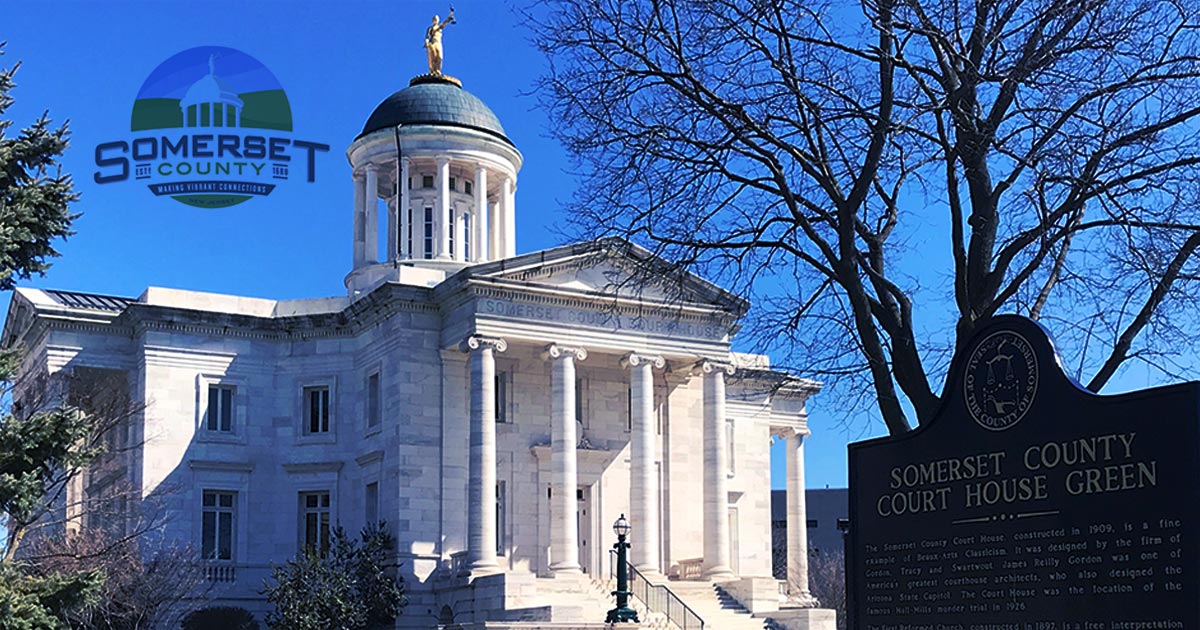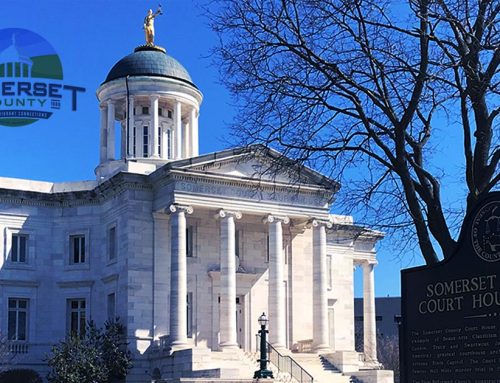Get ahead of the residential real estate market drivers in Somerset County, New Jersey, with Coldwell Banker Residential Broker sales associate, Joe Peters. Joe’s monthly report walks people through the economic conditions and trends that influence our local markets. You will come away knowing what is happening and, more importantly, why it is happening. As a result, you will be better informed to make home buying and selling decisions.
What is happening
Based on the last full month’s contract sales, statistics show a supply of approximately three months, indicating a seller’s market. Normal market conditions average four to six months in Somerset County. Units going under contract averaged 57 days on the market. 356 properties went “under contract” in February compared to 347 in the prior month. Newly listed properties in the same period totaled 399.
Somerset County Inventory Breakdown By Price For Last Month:
| February | February | Total | ||
| Somerset County | New | Under | Active | Months’ |
| Listings | Contract | Listings | Supply | |
| Condos/Town Houses * | 144 | 121 | 329 | 3 |
| Over 55 Communities* | 13 | 10 | 51 | 5 |
| $000K to $199K | 17 | 18 | 49 | 3 |
| $200K to $299K | 54 | 73 | 120 | 2 |
| $300K to $399K | 62 | 83 | 162 | 3 |
| $400K to $499K | 48 | 63 | 145 | 3 |
| $500K to $599K | 51 | 50 | 119 | 2 |
| $600K to $699K | 35 | 28 | 93 | 3 |
| $700K to $799K | 32 | 20 | 74 | 2 |
| $800K to $899K | 35 | 8 | 67 | 2 |
| $900K to $999K | 25 | 5 | 50 | 2 |
| $1,000K and Up | 40 | 8 | 140 | 4 |
| Totals for February | 399 | 356 | 1019 | 3 |
| Average Price | $645,192 | $468,990 | -27.3% | |
| Average Days on Market | 57 | |||
| * Included in $ breakdowns |
- 45% of sales in houses < $500,000
- 45% of sales in houses > $500,000 and < $1,000,000
- 10% percent of total sales (or 8 in total) in houses >$1,000,000
Somerset County Inventory Breakdown By Municipality For Last Month:
| Active Listings | Under Contract | Month’s Supply | |
| Bedminster Twp | 63 | 20 | 3 |
| Bernards Twp | 118 | 33 | 4 |
| Bernardsville | 69 | 14 | 5 |
| Bound Brook | 13 | 7 | 2 |
| Branchburg Twp | 65 | 21 | 3 |
| Bridgewater Twp | 114 | 48 | 2 |
| Far Hills Boro | 13 | 0 | |
| Franklin Twp | 127 | 65 | 2 |
| Green Brook | 20 | 9 | 2 |
| Hillsborough | 94 | 40 | 2 |
| Manville Boro | 23 | 11 | 2 |
| Millstone Boro | 2 | 0 | |
| Montgomery Twp | 99 | 23 | 4 |
| North Plainfield | 35 | 16 | 2 |
| Peapack Gladstone | 13 | 5 | 3 |
| Raritan Boro | 15 | 3 | 5 |
| Rocky Hill Boro | 4 | 1 | 4 |
| Somerville Boro | 19 | 8 | 2 |
| South Bound Brook | 10 | 4 | 3 |
| Warren Twp | 68 | 19 | 4 |
| Watchung Boro | 35 | 9 | 4 |
| Totals | 1019 | 356 | 3 |
Two areas in Somerset County reported no sales in the past month:
- Farr Hills
- Millstone
Only one area reported one or two sales each last month:
- Rocky Hill
Hotspots:
- Bernards – 33 sales
- Bridgewater – 48 sales
- Franklin – 65 sales
- Hillsborough – 40 sales
- Montgomery – 23 sales
These hotspot areas equaled 59% of the sales last month. The average new listing coming on the market last month neared $645,192 The average price of a unit going “under contract” neared $468,900 (27% less).
Note: To get an accurate price point for your property based on its location and price point, contact me. Coldwell Banker’s big data technology capabilities will put you at a unique advantage. I can show you the latest age and earnings breakdown for your particular area, show you where people are moving into that area from and how I can market to those specific areas and demographics directly. The result is in you receiving the maximum selling price with a shorter time on the market. Houses priced and marketed accurately sell faster, especially with a real estate industry veteran and local expert, helping you navigate the process.
Why it is happening
New Jersey’s Economic Drivers:
New Jersey Home Sales and inventory levels:
The still low inventory numbers are leading to price appreciation on existing homes. It is turning the tide back to a buyers market (or at least neutralize it to being a normal market).
We saw an increase of 12% in sales in January vs. last January. While this is not state-wide, 19 of the 21 counties have benefited with an increase in sales. NJ finished 2019 with the highest contract sales on record.
Decreases in inventory have occurred in all price points with the under $400,000 market seeing the largest drop which was about a 25% decline.
Total purchases in January increased by 950+ units over last January. Interest still concentrates in the under $400,000 market where Millennial buyers are transitioning into homeownership. The $400 to $600K range also saw a little over 25% increase in units sold.
At the same time, the number of homes offered for sale in New Jersey remained low. Currently, ~44,000 fewer homes (-60%) are on the market compared to the 2011 peak.
Current unsold inventory in New Jersey varies widely by county with only 3.3 months as compared to 4.5 months last year, which is a significant drop.
We still have an acute shortage of inventory in both Hunterdon and Somerset County in our more popular price points and locations.
Hunterdon and Somerset County have about 12% & 15% less inventory than we had a year ago, respectively.
The market has changed from a seller’s to a buyer’s market above $500K market due to the additional inventory coming on to the market affecting the selling prices for those properties.
Also, we are now seeing some millennials coming back into our local markets, with 26% thinking that it is the right time to buy (good news).
Interest Rates:
Interest rates have fallen slightly over the last month.
The economy is strengthening, and Interest rates have fallen in recent weeks to just over 3.45% for a 30-year conventional mortgage. A fifteen-year conventional mortgage rests at just over the 3% mark. Five-year arms are just under the 3.25% range.
Consumer fears of further rises in interest rates and slowly rising home prices are driving the current market demand. The Fed has made several downward adjustments, and more may still be in order (especially to correct the current financial market jitters caused by the virus scare)
The fear of increasing interest rates, coupled with steadily increases in prices, is still driving the current market activity.
National Job Front:
On the national level, the US added over 2,100,000+ in 2019 v. 2,700,000 jobs in 2018.
US unemployment rate slowed in January, came in with 225,000 jobs added. And unemployment rose slightly to 3.6%.
At the end of January, there were 6.4+ million openings compared to nearly 5.8 million unemployed persons.
We are hearing not only can’t we find qualified people but that we just can’t find people to fill the current job openings.
New Jersey Job Front:
In 2019 NJ added 39,000 jobs once again. NJ added 39,000+ jobs in 2018 as compared to 47,100 for the same period in 2017.
The NJ unemployment remained at 3.5%, maintaining consumer confidence in NJ as well. In effect, NJ is rising with the national tide of nearly full employment.
The level of jobs created has been at consistently higher levels than in the past several years (a silver lining as these additions to our job market will be able to afford to buy houses eventually).
It also should be noted that these jobs are mostly in the northern half of the state.
It is important to look at the unemployment numbers by county as well. In both Hunterdon and Somerset counties, these numbers are well below the state figure (more like 2.5%).
Rental Market Trends:
Rental prices in New Jersey rose again in 2019, averaging just over $1,600 per unit. Current vacancy rates in New Jersey have held to around 3.8% in NJ. vs. 4.7% nationally.
The drop in New Jersey’s homeownership contributes to rental demand. A 12+ year trend shows a decrease from 71% to 66%. This 7% decrease compared to an 8% national decrease contributes to the slower recovery of home prices in the state and adds over 20,000+ additional renters in our state. However, the 71% level resulted from the loose lending standards of the early 2000s and is actually at a good level. Households with no children stand at 65%, reflecting the decline in our school population.
One article states that the average homeowner who is 65+ has an average net wealth of over $318K, while the same for a renter is only just under $8K. It also offers a stable place to live, an evident hedge against inflation, and a way to build wealth (a strong argument for homeownership).
However, the number of renters has increased by 7% over the past 25 years, with the less educated leading the way. And, we are now seeing more educated millennials moving east into higher rent and cost of living areas that eat into their discretionary income (including savings). It makes one wonder where this all is heading.
The pace of new rental construction has increased by nearly 5 fold to meet this demand.
New Jersey Foreclosures:
New Jersey continues to face falling foreclosure rate filings at about 2.0%. Other states have begun to or have already recovered. In a tight real estate market, these foreclosures sell at a small discount.
Note: Figures vary by the local market, especially those walloped by Hurricane Sandy three years ago and rural and urban areas. We rank #4 in the country with 2.0%, led by NY with 2.6%, MI with 2.4%, LA with 2.4% (mostly hurricane-related). The national baseline number sits at a little under 1.3%.
Foreclosures in NJ in 2018 were the lowest in the state in over four years. And, 2019 was even better with a number of just under 38,000 foreclosure filings (the lowest since 2012). With only one month in, NJ looks to be on track for a 40,000 foreclosure number in 2020.
Real Estate Market Recap
Overall Economic conditions:
• We are now in our longest economic expansion period in America’s history with 125+ months of positive job gains.
• The GDP is still rising (although its rate of increase seems to be slowing a bit).
• At 3.5% unemployment, NJ is now near to the national average, which is currently at 3.6% & leading economic indicators in NJ are now surpassing the nation. And both Hunterdon and Somerset counties are in the 2.5% range.
• The best paying and most attractive jobs are in NYC, pulling many of our millennials in that direction (although this trend is diminishing).
• And, wages are up significantly at the same time.
• Interest rates have decreased to just under 3.5%.
• And, house prices have risen around 3+% in the more popular housing price points and areas further exasperating the situation (although this appreciation now appears to be slowing).
• Baby boomers who were choosing to “stay put’ and update rather than “move up” to their dream house as it is no longer considered a sound investment (and a lot of times inventory is not available) which is causing most of the housing shortage are now finding available inventory. This situation has loosened up as many new listings have come on the market over the past few months.
• And there is still little, if any, entry-level construction going on in our area, just larger homes and new rentals. Nationally new construction is 50% of what it was over the last 10 years.
• As a result of the previous two points, we are experiencing the current housing inventory shortage (the shelves are empty in our starter housing price points of under $400K).
• And, some empty houses are starting to appear at out higher price points.
• Foreclosures rates have almost normalized.
• There is strong continued buyer confidence. The robust job situation is supporting our national economic situation.
The current virus scare is a wild card as it is getting more and more press.
Changes in lifestyle:
• The average age at marriage is now in the mid to late ’30s (up seven years from just a decade ago).
• Families usually have only one to two children due to costs and the ability to choose.
• 70% of all NJ homes have no children of school age, and 50% do not have more than one person in them. This factor minimizes the need for larger housing not only in NJ but everywhere.
• As a result of job opportunities, buyers are gravitating to areas within 15 miles of NYC with good mass transportation systems.
• 80% of consumers still perceive homeownership as part of the American Dream. It is just what they want to buy (or rent) that has changed.
• Builders have been thinking larger 4 BR center hall colonials on 1+ acre in the country (based mostly on local building codes).
• Buyers are thinking of smaller luxury hi-rise close to mass transportation and work in the east (truly a mismatch).
• 60% of all new housing starts in 2020 in NJ were in the rental sector and 2020 numbers will surpass that. This is contributing to the lack of new construction.
Market conditions:
• It appears that we are now entering the next phase of the housing cycle, which is still active, just less robust in price appreciation. Sort of a cool down from previous years. Or, maybe back to normal.
• And, the warnings of an economic slowdown seem to be on hold for the present as there is no current forecast for a rise in the prime rate. It might even drop to help correct current financial market conditions.
• Should we eventually see a slowdown, we may see fewer sales and less price appreciation as a result. The effect is not predicted to result in any loss in value in our popular price points.
• But, in general, homeowners are sitting with more equity than ever (NJ reports 95+% with positive equity) and are no longer using their homes as an ATM. So, the effect of any slowdown on housing should be minimal (if at all).
• Consumer confidence remains high nation-wide based on the job and stock market increases.
• Most consumers still see homeownership as a sound investment.
• There is a bit of offset to this encouraging news from the discord that we see in our national politics and trade policies.
• This confidence is reflected in buyer traffic being up at open houses. However, with a lack of inventory in our lower price points, there are fewer houses for sale.
• Affordability will never be in this good of shape as interest and price increases start to eat into what you can afford.
• Millennials make up about 35% of our current homeowners with much more room for expansion at the lower end of the market when adequate inventory supply materializes.
• Central New Jersey’s trend in 2019 shows an increase in home sales, but price increases only in houses clustered in < $400,000 market where the first-time buyers and Millennials are focused.
• Prices in the >$400K to $600K market have increased a bit as we have seen additional new inventory in this range. We also saw increased sales in this range.
• The over $600K market is challenged price-wise depending on the location and the higher the price-point.
• Minimal new construction, lack of entry-level new housing, and COAH restrictions add additional value to the current inventory.
• The five-year forecast indicates slow but steady price growth (but at reduced rates) at an annual average of 2 to 4% (depending on location and price point). This price growth will remain higher in the under $400K market. And, little depreciation is forecasted except in the higher-end inventory.
• There is an acute shortage of inventory in both Hunterdon and Somerset County in our more popular price points and locations, which is holding back even more sales. In general, we have only about 60% of the inventory that we had in 2011 but are selling current inventory at faster rates.
• It is simple; we could sell more houses if we had more inventory on hand, And, as we have started to see small inventory increases over the past six months, 2019 can be a boom for resales.
• In 2019 prices rose ~ averaging just over 3% and depending on price points and locations. 2020 promises to be more normalized with at least 2 to 3% growth in prices. But it depends on your price point and location. The following two years will also see about 3 % showing modest positive growth.
• Mortgage delinquency is now approaching more normal levels.
Forecast:
• setting virus fears aside, the economy will continue to prosper with no recession currently in sight for the next 12 months. And, there most likely will be only a slowdown impact on the rate of price appreciation if this happens.
• Prime Interest rates have dropped several times in the past 12 months and may drop further.
• Home prices will rise by an average of another 3% during that same period (this will depend on your price point and location), further decreasing buying power. And, the most bullish projections show at least a 6 to 7% increase over the next few years.
• While improving, supply will remain tight in the more popular price points in the residential real estate.
• Many new jobs seem to be resulting from the Tax and Jobs act (look at the help wanted signs).
• For the first time in memory, the US is reporting 6.4+ million open jobs and under 5.8+ million unemployed. We are at full employment if you consider that 3% of unemployed is the normal level.
• We now need to match the skills of the unemployed to the job openings to prosper further as many four-year degrees currently being obtained, are not useful in the current job market. It has also opened up the need for inward migration of workers to the economy. In some areas, this is happening via people immigrating from outside of the US to regions with the skills needed to fill open positions.
• The affordability index shows that there is room for much more sales; all we need an increase in inventory. The most affordable time to buy appears to be now!.
• Some high-end fall-out has resulted in the residential real estate from the SALT and mortgage interest changes in the Tax and Jobs act.
• The commercial real estate market is flourishing as a result of creating more buying demand.
• People in their home > 10 years have very positive home equity built up, and a more significant portion of payments applies to principle. Increases in selling prices should eventually motivate people to make changes in their lifestyle by investing in summer homes or even start a new business with the extra equity cash.
• And, thirty-seven percent of all homes in the US have no mortgage at all.
• Small investor activity in the market is up. In many cases, these are flippers buying-low end unsaleable inventory and bringing it up to marketable status.
As New Jersey is a gateway state for foreign trade with our large trade ports in Newark and Elizabeth, there will be most certainly some fall-out from the slowdowns in the shipping industry. Also, we see impacts in the entertainment and travel industries already. It is way too early to tell what this impact will be at this point. But until we get our hands around this scare, we can expect to continue to see an impact in our state’s economy. That impact will most certainly affect our real estate industry.
But, on the positive side, this new low level on interest rates offers a unique short-term opportunity to buy at a price point in mortgage rates that we may never see again.
Note: Presented as a public service by Joe Peters of Coldwell Banker Residential Brokerage. I took reasonable precautions in presenting this information. Please consult with a professional sales agent and take no actions based on my opinions, gathered trends, and statistics. I assume no liability. You can contact me at (908) 238-0118.





